Exploring OAuth 2.0 and Debugging with EchoAPI
OAuth 2.0 is a widely used authorization protocol that enables third-party applications to access protected resources without needing user credentials. The OAuth 2.0 protocol offers multiple authorization flows to achieve this.
What is OAuth 2.0?
OAuth 2.0 is a widely used authorization protocol that enables third-party applications to access protected resources without needing user credentials. The OAuth 2.0 protocol offers multiple authorization flows to achieve this.
General Authorization Flow
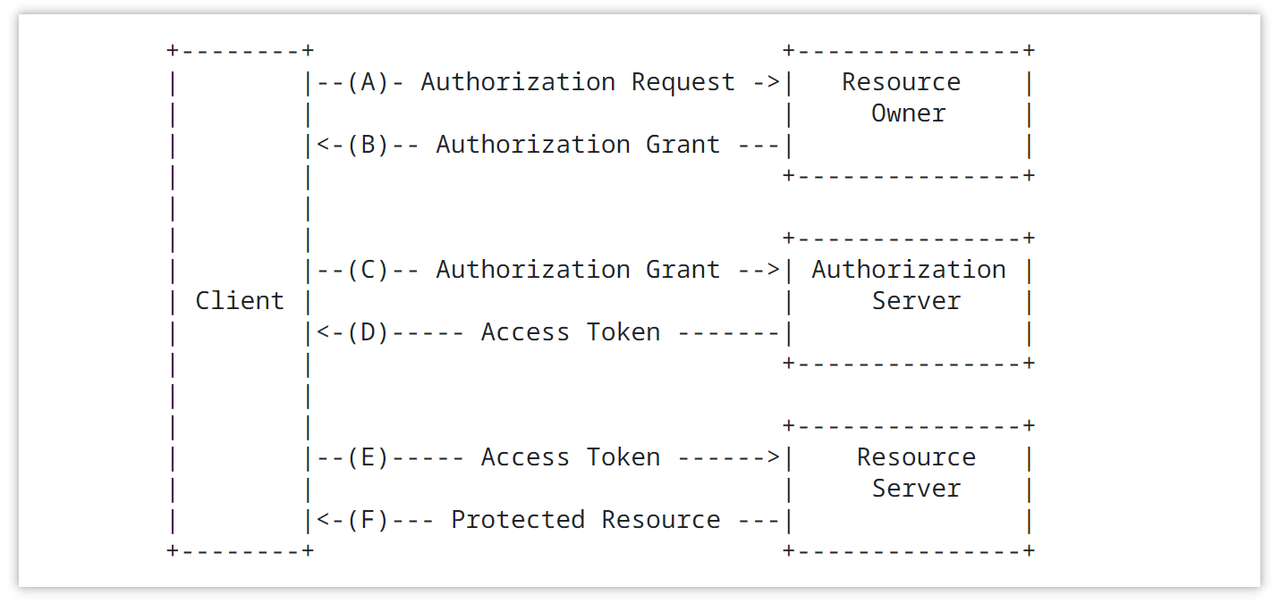
(A) The user opens the client, which requests authorization from the user.
(B) The user grants authorization to the client.
(C) The client uses the authorization granted to request a token from the authorization server.
(D) The authorization server authenticates the client and, if validated, issues a token.
(E) With the token, the client requests access to resources from the resource server.
(F) The resource server verifies the token and grants access to the client.
Four OAuth 2.0 Authorization Modes:
- Authorization Code Grant: The client redirects the user to the authorization server. After logging in and granting permissions, the server returns an authorization code to the client. The client exchanges this code, along with its credentials, for an access token. This is the most common flow, used by large organizations.
- Implicit Grant: Used for web applications, the client directly receives the access token from a browser-based application.
- Resource Owner Password Credentials Grant: Here, the resource owner provides their username and password directly to the client, which then requests an access token from the authorization server. This requires a high level of trust in the client, such as being a part of the operating system or a notable company.
- Client Credentials Grant: The client uses its own credentials to request an access token from the authorization server when it needs to access resources. Technically, this isn't considered part of OAuth as the client requests on its own behalf.
Implementing Github OAuth 2.0 Authentication with EchoAPI
1. Enter the Generated Client ID and Secret from Github
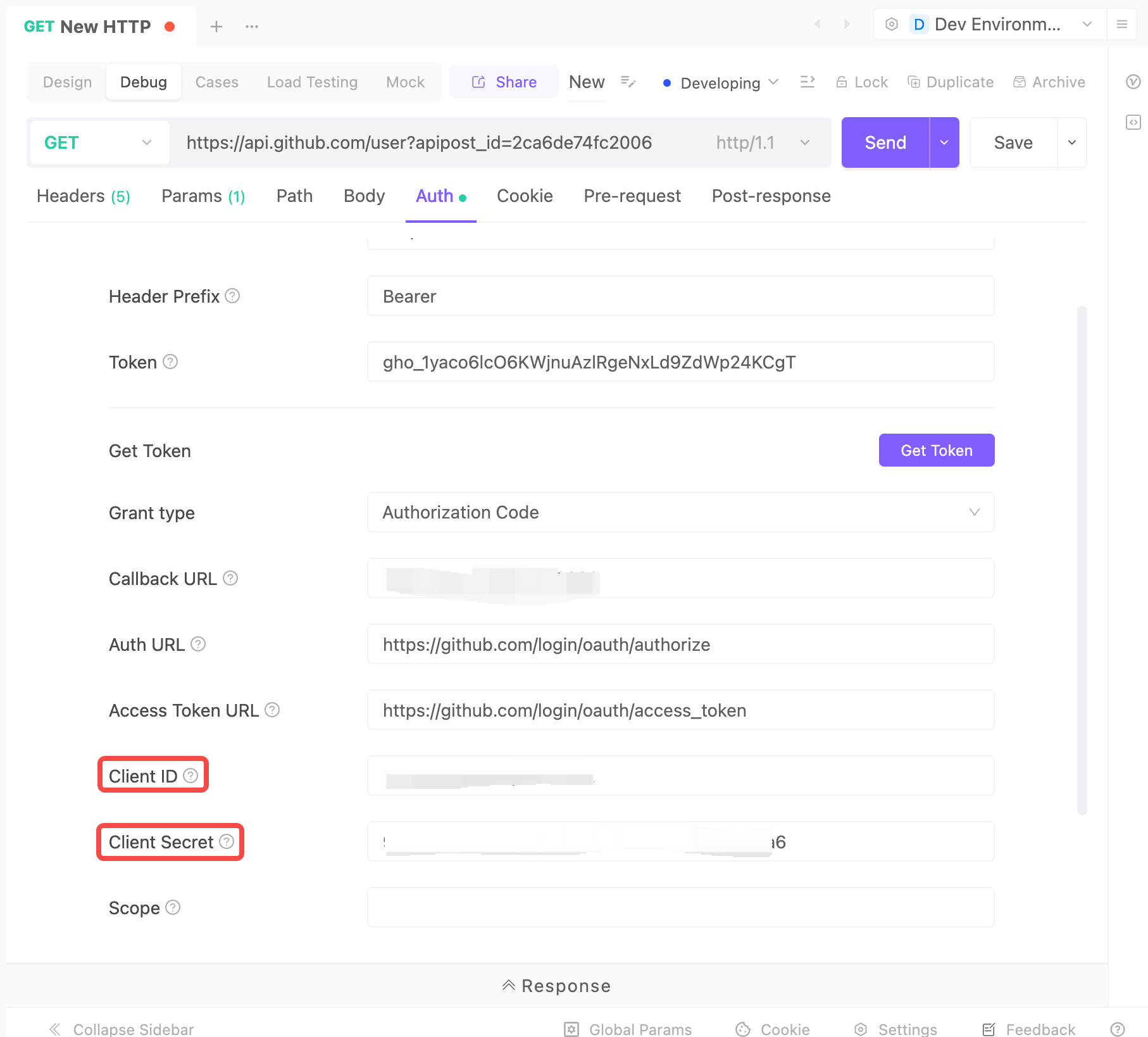
2. Click "Get Token" to Trigger the Login Prompt
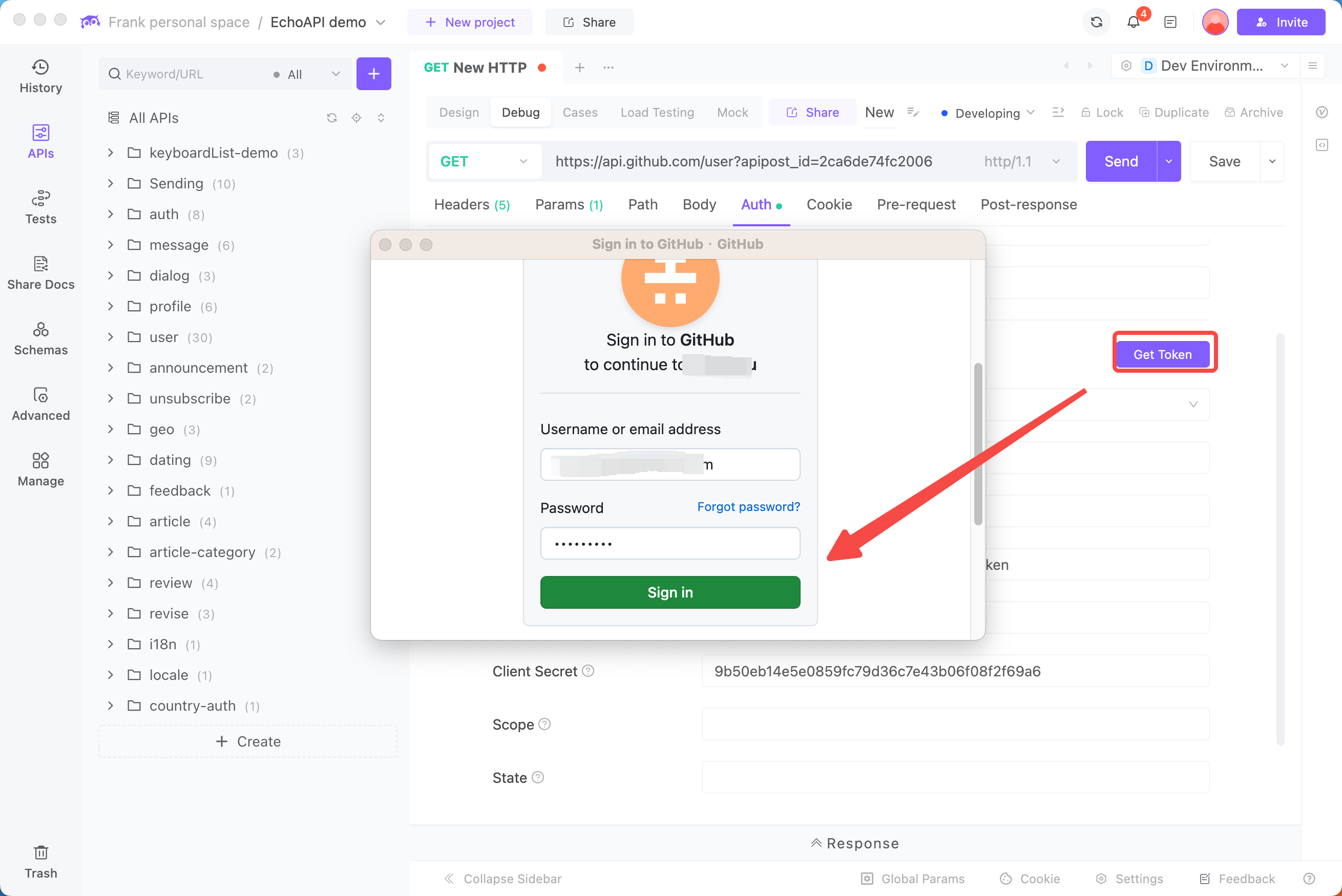
3. Receive the Token After Logging In
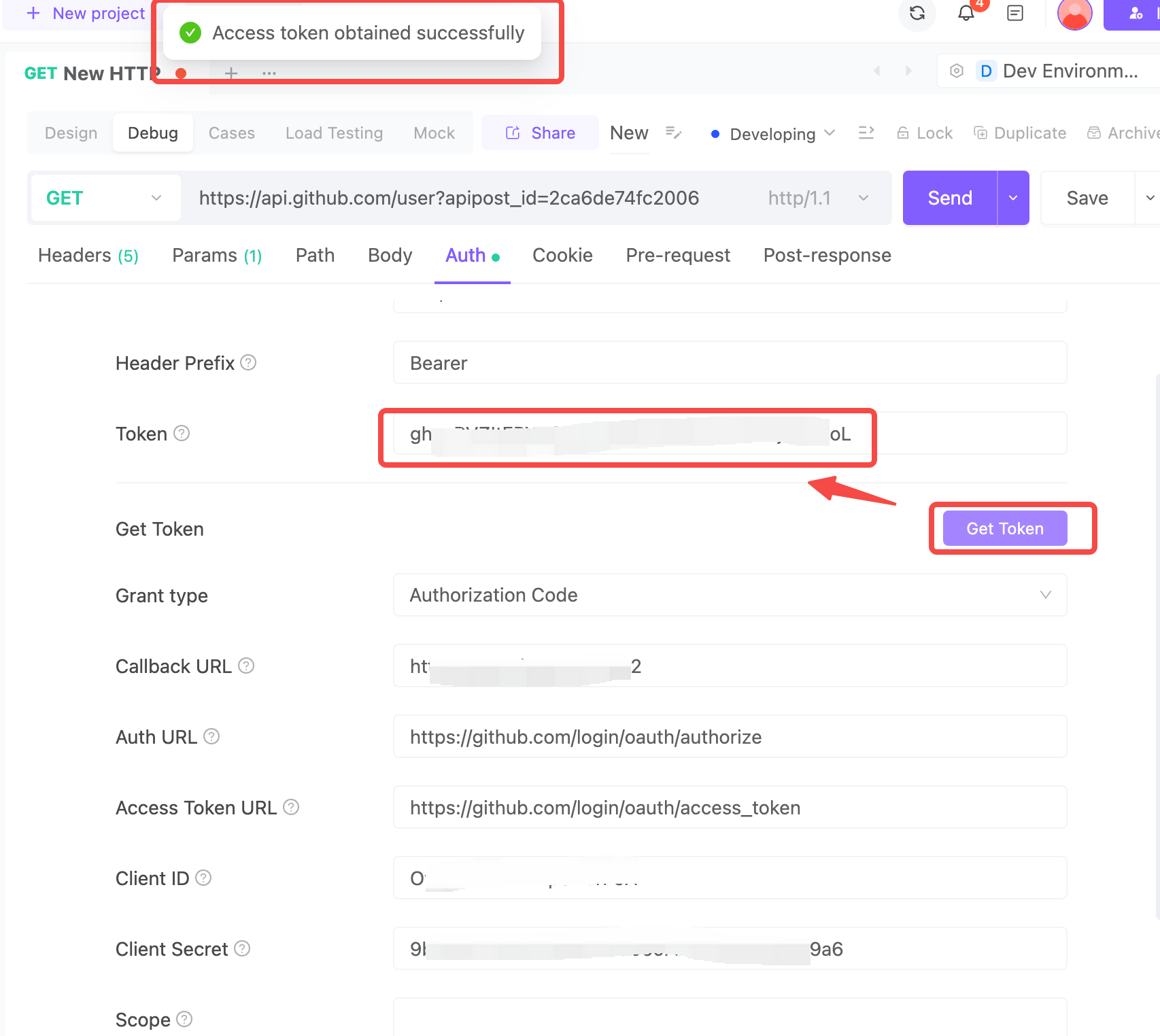
4. Use the Token to Access Github User Information
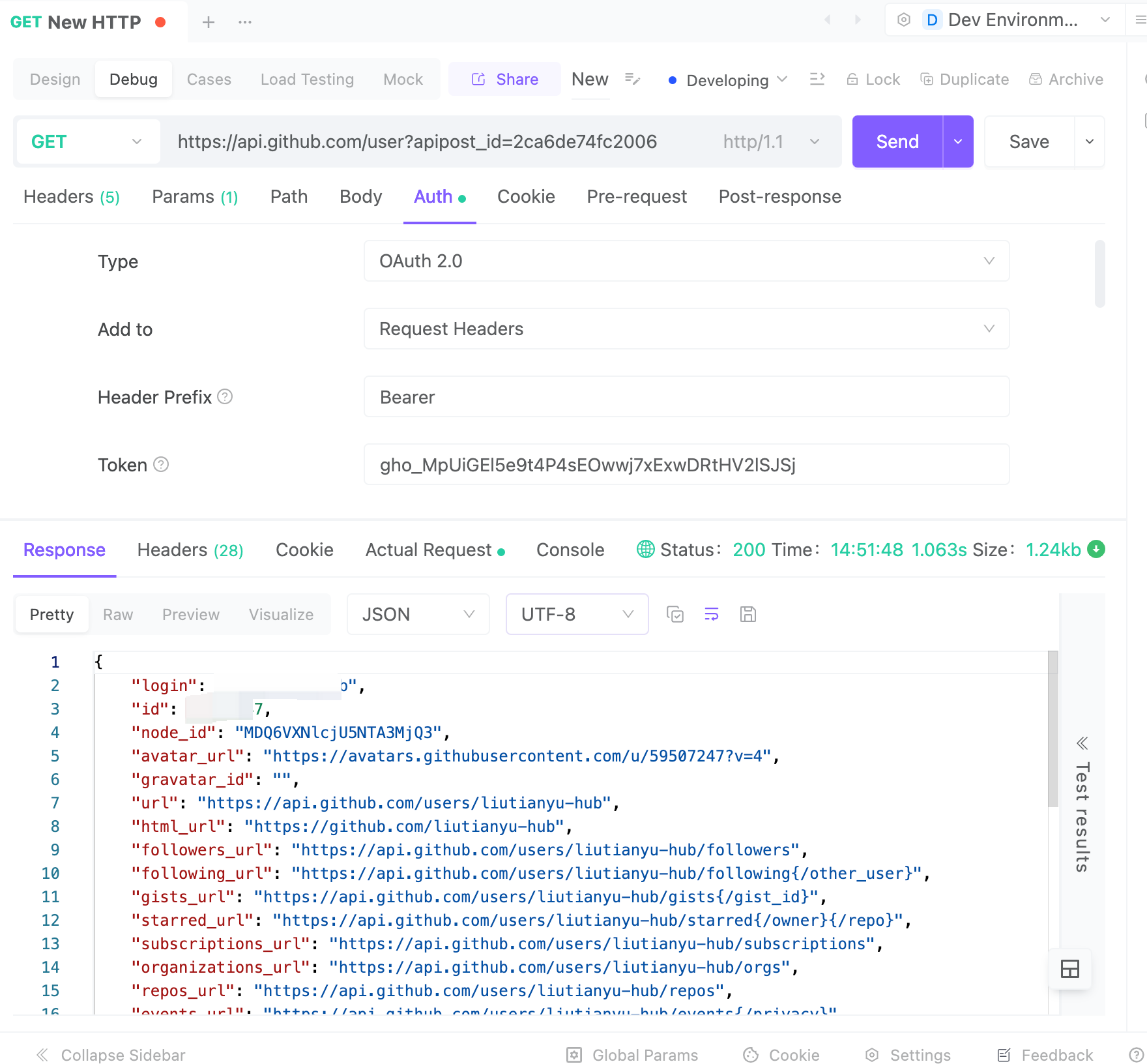









 EchoAPI for VS Code
EchoAPI for VS Code

 EchoAPI for IntelliJ IDEA
EchoAPI for IntelliJ IDEA

 EchoAPl-Interceptor
EchoAPl-Interceptor

 EchoAPl CLI
EchoAPl CLI
 EchoAPI Client
EchoAPI Client API Design
API Design
 API Debug
API Debug
 API Documentation
API Documentation
 Mock Server
Mock Server




